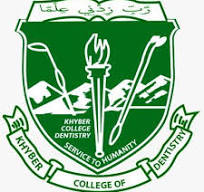FREQUENCY OF DENTAL ATTRITION AND COMMON ORO-DENTAL FACTORS
DOI:
https://doi.org/10.33279/jkcd.v9i04.392Keywords:
Dental attrition, Unacceptable vertical overlap, Kennedy Class1, Bruxism, clenchingAbstract
Objective: The objective of this study was to find the frequency of dental attrition and common oro-dental factors leading to it. Study Design Descriptive (cross-sectional) Study. Setting: Oral medicine Prosthodontics Department, Peshawar dental college. Period: 10th December 2017 to 16th July 2019. Materials & Methods: A total of 189 patients were included in the study. The male to female ratio was 0.95. The average age of the patients was 46.49 years ±6.93 (SD) with a range of 35-70 years. Dental attrition was seen in 66 (34.9%) patients.
Results: The most common cause was bruxism which was observed in 44 (23.3%) patients followed by Kennedy Class 1 partially dentate state in 36 (19.0%), clenching in 25 (13.2%) and unacceptable vertical overlap in 25 (13.2%) patients.
Conclusion: Irrespective of the extent dental attrition was a common finding in 35% patients. Bruxism is the most common cause of dental attrition, which is to be considered in management of such patients.
Downloads
Published
How to Cite
Issue
Section
License
Copyright (c) 2019 Muhammad Younas, Sadiq Jameel, Aamir Hameed, Farooq Taj, Mumtaz ul Islam, Faheemullah

This work is licensed under a Creative Commons Attribution-NonCommercial-NoDerivatives 4.0 International License.
You are free to:
- Share — copy and redistribute the material in any medium or format
- Adapt — remix, transform, and build upon the material
- The licensor cannot revoke these freedoms as long as you follow the license terms.
Under the following terms:
- Attribution — You must give appropriate credit , provide a link to the license, and indicate if changes were made . You may do so in any reasonable manner, but not in any way that suggests the licensor endorses you or your use.
- NonCommercial — You may not use the material for commercial purposes .
- No additional restrictions — You may not apply legal terms or technological measures that legally restrict others from doing anything the license permits.









